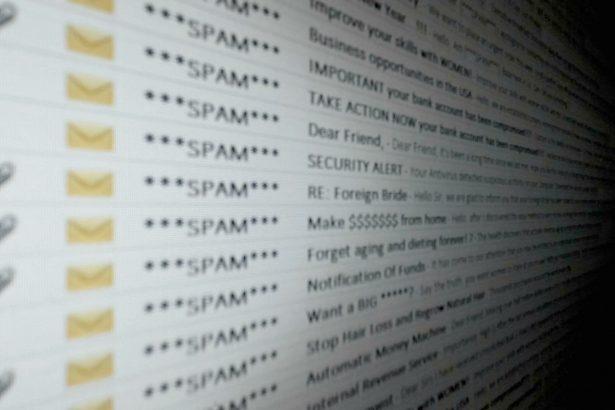The “You Have Exhausted All of Your Available Email Storage” scam is a classic phishing scheme targeting unsuspecting email users with urgent warnings about storage limits. Disguised as an official message from your email provider, this scam tries to trick you into clicking a malicious link under the pretense of preventing service interruption. In reality, it’s designed to steal your login credentials and compromise your email account.
Scam Summary
| Threat Type | Phishing Email Scam |
|---|---|
| Associated Email | Varies, typically spoofed (e.g., IT helpdesk, mail administrator) |
| Detection Names | Phishing.Email.Scam, Suspicious.Email.Quota.Alert |
| Symptoms | Fake email storage warning, phishing link to login page |
| Damage & Distribution | Account compromise, stolen credentials, identity theft; sent via mass spam campaigns |
| Danger Level | High |
🛡️ Download SpyHunter to scan for scam-related threats →
How “You Have Exhausted All of Your Available Email Storage” Scam Tricks Users
This phishing scam lands in your inbox appearing to be a legitimate system alert from your email provider. It usually claims:
“You have exhausted all of your available email storage. You will be blocked from sending or receiving emails unless you update now.”
It includes a fake quota usage bar and a button or link like “Update Storage,” “Reactivate,” or “Click Here.” Clicking the link leads you to a counterfeit login page designed to harvest your email credentials.
What makes this scam convincing is its use of:
- Realistic branding (copied logos, email formatting)
- Threatening language to incite panic
- URLs that mimic real domains (but are slightly altered)
Full Text of the “You Have Exhausted All of Your Available Email Storage” Message
Here’s a typical version of this scam email:
Subject: Storage Quota Limit Exceeded
Message:
You have exhausted all of your available email storage. You will soon be blocked from sending and receiving emails.
Current usage: 98.98% of 5 GB
Please click the button below to update your email quota and restore services.
[UPDATE STORAGE]
Thank you,
Mail Server Administrator
🚩 Red flags:
- Vague sender address or spoofed domains
- Grammar or formatting errors
- Pressure to act immediately
What Happens If You Fall for the Email Storage Quota Scam?
If you enter your login on the fake page, your credentials are immediately sent to cybercriminals, who can:
- Hijack your email account
- Access sensitive communications
- Launch further phishing campaigns from your address
- Use your email to reset passwords for other accounts (banking, social media, etc.)
In some cases, clicking the link can also trigger malware downloads, especially on unprotected systems.
Manual Removal Guide: How to Identify and Remove Email Scams Yourself
Step 1: Recognizing Scam Emails
Before taking action, learn to identify email scams. Some common red flags include:
- Unknown Sender: Emails from unfamiliar addresses, especially if they claim to be from banks, tech support, or government agencies.
- Urgent or Threatening Language: Messages pressuring you to act quickly (e.g., “Your account will be suspended!”).
- Poor Grammar & Spelling Mistakes: Many scam emails contain grammatical errors.
- Suspicious Links or Attachments: Hover over links to check if they lead to an unusual website before clicking.
- Requests for Personal or Financial Information: Legitimate companies will never ask for sensitive details via email.
Step 2: Avoid Interacting with Scam Emails
If an email appears suspicious:
- Do NOT click on any links.
- Do NOT download attachments.
- Do NOT reply to the sender.
Step 3: Report the Email Scam
Reporting scam emails helps prevent others from falling victim to them:
- Gmail/Outlook/Yahoo Users: Click “Report Phishing” or “Report Spam” in your email client.
- FTC (U.S. users): Report scams to the FTC Complaint Assistant.
- Google Safe Browsing: Report phishing sites at Google’s Phishing Report.
Step 4: Block the Sender
To prevent further scam emails from the same sender:
- Gmail: Open the email, click the three dots, and select “Block [Sender Name]”.
- Outlook: Open the email, select “Junk” > “Block Sender”.
- Yahoo Mail: Click “More” > “Block Sender”.
Step 5: Check Your Accounts for Compromise
If you’ve interacted with a scam email:
- Change your passwords immediately. Use strong, unique passwords.
- Enable Two-Factor Authentication (2FA). Adds an extra security layer.
- Monitor your banking transactions for suspicious activity.
Step 6: Scan Your Device for Malware
If you accidentally clicked a link or downloaded a file, scan your system for malware:
- Windows Users (Windows Defender)
- Go to Settings > Update & Security > Windows Security > Virus & Threat Protection.
- Click “Quick Scan” or “Full Scan”.
- Mac Users
- Use security software like Malwarebytes for Mac to scan for threats.
Step 7: Strengthen Email Security
- Enable spam filtering in your email provider’s settings.
- Use a third-party spam filter such as Spamihilator or Mailwasher.
- Stay educated on phishing techniques to avoid falling for scams in the future.
SpyHunter Removal Guide: Automated Solution for Email Scam Threats
SpyHunter is a powerful anti-malware tool designed to detect and remove phishing-related threats, Trojans, spyware, and other cyber threats. If you prefer a quick and automated solution, follow these steps:
Step 1: Download SpyHunter
- Visit the official SpyHunter download page: Download SpyHunter
- Click “Download” and save the file.
Step 2: Install SpyHunter
- Open the downloaded file (SpyHunter-Installer.exe).
- Follow the on-screen installation instructions.
- Once installed, launch SpyHunter.
Step 3: Perform a Full System Scan
- Open SpyHunter and go to “Malware/PC Scan”.
- Click “Start Scan Now” to begin scanning.
- SpyHunter will detect threats linked to email scams.
Step 4: Review and Remove Detected Threats
- After the scan completes, SpyHunter will display a list of detected threats.
- Click "Fix Threats" to remove them.
- Restart your computer after removal.
Step 5: Enable Real-Time Protection
- Activate SpyHunter’s Active Guards for real-time malware protection.
- Schedule regular system scans for ongoing security.
Step 6: Keep SpyHunter Updated
- Regularly update SpyHunter to detect new threats.
- To update, go to "Settings" > "Update" and click "Check for Updates".
How to Prevent Future Email Scams
To avoid falling for email scams in the future, follow these precautions:
Use a Secure Email Provider
Consider using encrypted email services like ProtonMail or Tutanota for enhanced security.
Avoid Clicking Suspicious Links
Always verify links before clicking by hovering over them to see the actual URL.
Use a VPN on Public Wi-Fi
Scammers can intercept your data on public networks. Use a VPN for secure browsing.
Regularly Change Your Passwords
Use a password manager to generate and store secure passwords.
Install Anti-Phishing Browser Extensions
Use security extensions like Bitdefender TrafficLight or Avast Online Security to detect phishing attempts.
Email scams pose a significant risk to personal and financial security. By following this manual removal guide, you can effectively identify and remove scam emails. For those seeking a fast and automated approach, SpyHunter provides a reliable solution to detect and remove email scam-related threats.
Take Action Now
Protect your device from scam-related malware with SpyHunter: Download SpyHunter
Conclusion
The “You Have Exhausted All of Your Available Email Storage” email is not legitimate—it's a phishing trap designed to steal your credentials and potentially compromise your entire online identity. Never click suspicious email links, especially those asking you to log in or update storage.
To stay safe:
- Use multi-factor authentication (MFA)
- Report phishing emails to your provider
- Run a full system scan with anti-malware tools




